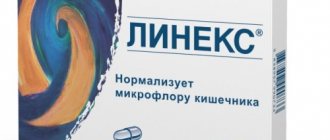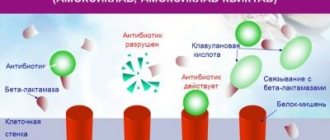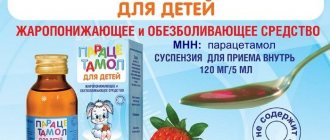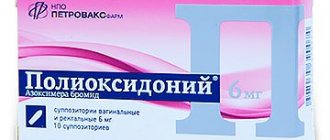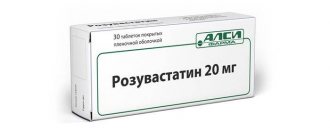- August 13, 2019
- Allergology
- Maria Mariyka
Second generation antihistamines are effective in alleviating allergies in adults and children. One of these modern medicines is Zyrtec syrup, the instructions for use for children contain complete information on use. Is it possible to treat children with this medicine and how the child’s body reacts to it, read the article.
Causes of allergies in children
The occurrence of an unpleasant allergic response in children is quite difficult to avoid, however, by understanding the reasons, it is quite possible to try to reduce the risk of the disease.
The main factors that contribute to an allergic reaction:
- Taking medications.
- Indigestion in the stomach, dysbacteriosis.
- During pregnancy, my mother ate foods that could cause allergies - citrus fruits, chocolate, honey, etc.
- Weak immune system.
- Complementary feeding with artificial mixtures.
Zodak
Active ingredient: cetirizine. It is a histamine H1 receptor blocker. According to the instructions, blocking these receptors prevents the release of histamine and the development of allergy symptoms. Zodac and Zyrtec are substances that belong to the same pharmacological group. They are available in the form of tablets, solution and drops.
- relieves allergy symptoms;
- reduces swelling and the amount of nasal discharge;
- does not cause sedation.
Zodak is a drug that is used to relieve the severity of allergy symptoms.
Which is better for a child, Zodac or Zyrtec, depends on the reason for prescribing the medication. In any case, the drug must be determined by a doctor.
The effect of the drug begins immediately after taking it. Zodak is used in the following situations:
- dermatoses of an allergic nature;
- conjunctivitis caused by allergies;
- seasonal hay fever or rhinitis;
- itchy skin caused by hives;
- seasonal fever.
The main contraindications are hypersensitivity. Not recommended for use during pregnancy and lactation. Prohibited for children under 1 year of age. Use with caution among the elderly and with severe pathology of the liver and renal system.
Tablets contain 10 mg of active substance. Use according to instructions.
Syrup composition
The active ingredient in Zirteca syrup is cetirizine. During a severe allergic reaction, the body's immune cells release the substance histamine, which causes the following symptoms: itching, swelling, redness of the skin. To do this, histamine needs to bind to receptor proteins on cells.
Cetirizine blocks histamine receptors, and, therefore, allergy symptoms do not develop further. Naturally, it is not possible to completely eliminate allergies with the help of Zyrtec syrup, but it is possible to alleviate the health condition.
Unlike the oldest antihistamines, cetirizine has a selective effect and changes the functioning of the brain to a much lesser extent. Therefore, it does not contribute to drowsiness, as, for example, when taking antihistamines with diphenhydramine or chloropyramine.
Analogues and generics
Antihistamines are very diverse. Therefore, of course, Zyrtec has its own analogues. Firstly, these are drugs based on the same cetirizine. Among domestic analogues, the main one is the drug under the same name Cetirizine. Its price is about 50-100 rubles. Foreign analogues:
- Zodak;
- Parlazin;
- Cetirizine-Teva.
Generic, i.e. Cetirinax is a non-original, non-branded drug. In terms of effectiveness, it is not much inferior to the original drug, but costs less.
Table: Preparations based on cetirizine
Among the drugs with other active ingredients are such well-known drugs as Erius, Telfast, Fexadin, etc. In fact, any antihistamine is an analogue. However, they are all divided not only by active ingredients, but also by generations, which differ from each other in the presence of side effects and effectiveness. Using the example of the most famous, “classical” representatives, it is interesting to identify the main characteristics of generations:
Generation, drug How long does it take to work Use during pregnancy, lactation, children Sedative effect Cost
Diphenhydramine, 1st generation This generation also includes the following drugs: diazolin; fenkarol; suprastin; allergosan.
60 minutes During pregnancy - with caution, in the presence of strict indications. under the supervision of a doctor; during lactation - prohibited; for children in the form of crushed tablets added to milk or food - from 1 month. Expressed Tablets (10 pcs) – 15 rubles
Claritin, 2nd generation This generation also includes the following drugs: fenistil; parlazin; ketotifen; kestin; Lomilan.
90 minutes During pregnancy and lactation - only for health reasons; children - syrup from 2 months, tablets from 6 months. Not expressed, rarely Tablets (10 pcs) – 225 rubles, syrup – 251 rubles.
Zyrtec, 3rd generation This generation also includes the following drugs: suprastinex; desal; Fexadine; Telfast; lordestin; erius; allegra.
20-60 minutes Prohibited during pregnancy and lactation; children in the form of syrup - from six months, in the form of tablets - from 6 years No
Drops – 300 rubles; Tablets (20 pcs) – 450 rubles.
Effect of the drug
According to the instructions for use for children, Zyrtec syrup begins to have an antihistamine effect soon after administration: within half an hour. The effect of the drug is not significantly reduced if the syrup is given to the child during meals, but doctors still advise giving the drug either before or after meals.
The syrup is excreted primarily in the urine, does not accumulate in the body and does not have an addictive effect. The instructions for using Zyrtec syrup for children state that if you take the drug in the dose prescribed by the doctor, it does not have a relaxing effect. That is, it does not depress the nervous system. Therefore, during the treatment period the child will not be lethargic and apathetic.
Use of Zyrtec during pregnancy and lactation
Zyrtec has been repeatedly tested and researched. During the next analysis of the drug, it was found that it does not have a negative effect on the development of the fetus, on the course of pregnancy or on the birth process. However, these studies were conducted on animals, and no clinical trials have been conducted on the use of this drug in pregnant women. Because of this, it is not recommended to take Zyrtec during pregnancy.
Zyrtec can be used during lactation only if the young mother consults a doctor about this. If she is breastfeeding, then the specialist may advise her to wean the baby off the breast while taking Zyrtec, because cytirizine, the main substance of the drug Zyrtec, is excreted along with mother's milk.
How to use syrup
The dosage for children is prescribed exclusively by the doctor after examining the little patient. To do this, he takes into account the age, physical health and condition of the child.
The instructions for using Zyrtec syrup recommend giving children under one year of age 5 drops of the substance throughout the day. The dosage can be divided into two doses. For children aged 1 to 2 years, the dose can be increased to 7 drops per day. This amount can be given at one time before bedtime or divided into 2 doses. For children from 2 to 6 years old, doctors prescribe 10 drops per day at a time or divided into 2 doses of 5 drops.
Zyrtec tablets for adults and children
The drug Zyrtec in tablet form should be taken by adults, 1 pill 1 time per day. If we are talking about elderly patients, then they should also adhere to this dosage. They do not need to reduce the dosage.
If the patient suffers from renal failure, then the dosage regimen of Zyrtec tablets must be adjusted with the attending physician. The fact is that the medicine is excreted by the kidneys, so in order not to burden them, the doctor will have to adjust the regimen for taking the antihistamine.
Patients with impaired liver function do not need to adjust the dosage regimen of Zyrtec tablets.
Zyrtec tablets in tablet form are cheaper than in the form of drops. Therefore, many parents are interested in the question: “Can this drug be given to children?” Yes, you can, but only from 6 years old. The dosage of tablets in this case should be as follows:
- Children 6–12 years old should be given ½ pill 2 times a day;
- Children over 12 years old – 1 tablet once a day.
Allergy treatment
When treating children, parents should remember that, judging by the instructions, Zyrtec syrup for children does not completely relieve the child of allergies, but only prevents the development of symptoms, provided that the drug is taken in a timely manner.
It is possible to completely free yourself from allergic manifestations or alleviate your health condition for a long time only in more drastic ways:
- complete exclusion of contact with the allergen;
- general strengthening of the immune system;
- carrying out desensitizing therapy if the doctor decides that this method can help free the child from an unpleasant disease.
General concept of analogues
Analogs are medicines with identical compositions, differing in that one medicine is patented, the manufacturer of which is the parent company, and the rest are called generics.
Analogs and patent-protected medicines have the same composition, do not differ in effectiveness from medicines protected by patent law, but are noticeably inferior in price.
Manufacturers of high-quality analogues research and compare the effectiveness and safety of a patented medicine and its substitute.
Many people incorrectly believe that analogue medications have the same effect. There are many remedies for allergies, but they cannot be called analogues of each other due to the difference in composition and the different effects they have on the patient.
Article on the topic: Ruzam: medicine for allergies, instructions, price and analogues
Zyrtec and its analogues for children
Main contraindications in children
Doctors do not advise taking the drug if the child is diagnosed with severe renal failure, and there is also increased sensitivity to the active and auxiliary components of the syrup.
It is important to note that parents should not give Zyrtec syrup to children under one year of age without medical supervision. It is especially dangerous to self-medicate children under 6 months of age. If a doctor prescribes Zyrtec syrup to an infant, the instructions for which fully describe the drug, the dose is calculated on a strictly individual basis. Parents cannot calculate dosages on their own.
Composition and release forms
There are two forms of the drug on the Russian market - drops and tablets. The active ingredient in both cases is cetirizine. The only difference is in the auxiliary components.
| Release form | Compound | Photo |
| Zyrtec drops | Active substance:
The presence of acetic acid in the composition is noteworthy. This explains the specific smell of the drug. However, this component does not pose any danger. The concentration of acetic acid harmful to health is 30%, and in this preparation it is about 0.08% in 1 ml, i.e. less than 1% of the entire volume of the drug. | |
| Zyrtec tablets | Active substance:
All additional components are formative and not significant. |
In some sources you can find mention of Zyrtec syrup or capsules, but today in Russia such forms of the drug are not registered and are not sold.
Overdose
If you give your child more Zyrtec syrup than necessary, this is an overdose. Do not wait until its first signs appear: drowsiness, lethargy, rapid heartbeat, dry mouth, constipation and urinary retention.
Be sure to evaluate in this situation what will be faster - wait for an ambulance or drive to the clinic yourself. The most important task is to quickly bring the child to a medical institution, where he will receive qualified assistance and a doctor will monitor his condition.
Zyrtec: instructions for use, price, reviews, analogues
In this article, the “focus” will be on the antihistamine drug Zyrtec and instructions for its use: we will figure out in what cases and how to take it, to whom it is contraindicated and as part of what therapy it is most effective.
Zyrtec is an original antihistamine, one of the trade names for the drug cetirizine. Some classifications classify this medicine as a second generation of antihistamines, but according to the opinion of most researchers and its pharmacological properties, the drug belongs to the third generation.
The content of the article
Trade name: Zyrtec® (in Latin - Zyrtec®)
Manufacturer: USB company, Belgium.
It should be noted that the price of the analogue directly depends on the region where the medicine is purchased, as well as on the pharmacy chain. It must be remembered that sometimes pharmacy owners mark up prices, so the table shows the average price for each Zyrtec analogue.
| Erius | 530 rub. |
| Fenistil | 320 rub. |
| Claritin | 179 rub. |
| Tavegil | 161 rub. |
| Suprastin | 150 rub. |
| Zodak | 157 rub. |
| Tsetrin | 127 rub. |
| Erolyn | 119 rub. |
| Cetirinax | 100 rub. |
| Letizen | 96 rub. |
| Parlazin | 68 rub. |
| Loratadine | 10 rub. |
Zyrtec analogues are similar to the patented drug. But it has been determined that one substance has a therapeutic effect on a particular person, while another patient experiences side effects from the drugs.
Reviews
Many parents speak well of syrup-based allergy treatment, claiming that this drug has a long-lasting effect. The advantages of the syrup also include the absence of dyes and all kinds of harmful chemical compounds in the composition.
The disadvantages of Zyrtec syrup are cited by parents of children whose allergies were treated as high cost, unpleasant taste and the occurrence of negative side reactions. The most common side effects are: diarrhea, fatigue, drowsiness and runny nose in children.
An allergic reaction is considered one of the most common pathologies in the world, and often a person experiences its first signs at an early age. Rhinitis, coughing, frequent sneezing, conjunctivitis, skin rashes and weeping wounds on the skin - all these repulsive phenomena can be direct signs of allergies. And the Zyrtec syrup for children, the instructions for use of which fully disclose the effect of the drug, can alleviate the child’s condition. Doctors prescribe Zirtec anti-allergy syrup for children even for infants. And starting from the age of 6, children can already take regular Zyrtec tablets with water.
Indications for use
Zyrtec drops for children against allergies are indicated from six months of age, and in case of particularly severe diagnoses, use is allowed for babies up to 6 months of age. Indications for use are quite extensive. The drops help with various types of allergic reactions and their symptoms in children, and help with other ailments.
When to use drops
- For frequent intolerance to certain food groups (dairy, red, etc.). With hay fever - a reaction to flowering (pollen) of plants, the symptoms of which are expressed in the appearance of a runny nose, swelling of the nasal mucosa, and tearfulness every year.
- Severe cough due to an allergic reaction.
- Chronic or seasonal runny nose.
- Conjunctivitis caused by allergies, lacrimation, conjunctival hyperemia.
- Atopic dermatitis, rhinitis and urticaria (chronic idiopathic form). Symptoms after using the drops disappear for at least a day, usually for 3 days.
- Drops help with insect bites and reactions to them (swelling, itching), including Quincke's edema.
- Adenoids. Relief comes, breathing becomes easier. The drug is prescribed only on the recommendation of the surgeon before surgery to remove them.
- Drops are prescribed for asthmatic attacks: they thin mucus and neutralize inflammation. Approved for mild and moderately severe forms of asthma.
- In some cases, the drug is prescribed by a doctor before vaccinating a child to reduce the body's adverse reaction to the vaccine.
- In active use since 2019, recommended by many allergists and pediatricians. They combine reasonable prices and high European quality.
Zyrtec drops are prescribed after prior use of similar drugs that have the same pharmacological effect. It is advisable that if your baby has one or more of the above symptoms, you should always have this remedy with you.
Cetritizine
A drug that causes an antiallergic effect, which develops by inhibiting the activity of histamine. It has no effect on the central nervous system, which reduces the risk of developing sedation. Available in various forms as tablets, drops and syrup for oral administration. The effect after use occurs immediately and lasts for 24 hours. This medicine is a Russian-made drug.
When using Cetritizine in people with bronchial asthma, a decrease in the severity of its manifestations is noted.
One tablet contains 10 mg of active substance. A similar amount of 10 mg is present in drops and syrup. Perhaps undesirable effects will occur in the form of drowsiness and headache.
Indications and contraindications
The main indication for which the drug is used is diseases of an allergic nature. These include:
- conjunctivitis;
- hives;
- all dermatoses with itching;
- seasonal hay fever.
Do not use the drug for severe kidney pathology. Use caution during pregnancy and lactation. At the same time as the drug, you should not take medications that suppress the central nervous system. Avoid simultaneous use with ethanol.
The price ranges from 50 to 100 rubles, depending on the shape. The cost of Zyrtec is much cheaper.
Drug interactions and special instructions
When taking Suprastin and barbituric acid derivatives simultaneously, the pharmacological effect of both pharmaceutical substances is enhanced. Opioid analgesics, Morphine, Codeine, Dihydrocodeine potentiate the effect of the antihistamine. M-anticholinergics have a similar effect. It is recommended to reduce dosages when using them together.
If a child needs to undergo a prick test (skin tests with various allergens to identify sensitivity), it is necessary to stop taking Suprastin 3 days before the diagnostic procedure. Antihistamines may interfere with test results and make it difficult to make a correct diagnosis.
Features of allergies in the perinatal period
Allergic signs can appear even in women who have not previously suffered from intolerance. The changes are associated with the protective properties of the body. If the expectant mother is allergic by nature, then manifestations of intolerance can be severe.
What symptoms occur when the immune system reacts inadequately to a pathogen:
- allergic rhinitis is the most common symptom, usually appearing in the 2nd trimester;
- allergic conjunctivitis - combined with a runny nose;
- contact dermatitis or eczema - thickening and swelling of the epidermis, redness and itching.
In severe situations, angioedema is possible . Urgent medical attention is needed, otherwise the risk of death increases due to swelling of the airways.
Tsetrin
Cetrin belongs to a group of drugs that cause an antihistamine effect. It consists of blocking histamine receptors, which ensures the development of symptoms. The active substance is cetirizine, which makes this drug a complete analogue of Zyrtec for children.
One tablet contains 10 mg, and 1 ml of syrup contains 1 mg of the active ingredient. When used, it relieves all allergy symptoms. The action develops 20 minutes after administration. The choice of Cetrin or Zyrtec should be based on the cause of the allergy.
Main indications and contraindications
The following indications for use are distinguished:
- seasonal allergic rhinitis;
- eye damage such as allergic conjunctivitis;
- seasonal rhinitis;
- any allergic inflammation of the skin;
- skin itching.
List of contraindications:
- prohibited during pregnancy;
- should be used with caution during breastfeeding;
- do not take if you are hypersensitive to any of the components;
- Do not use if side effects such as drowsiness and headache occur.
Which is better Zyrtec or Cetrin depends on the severity of the symptoms. The effect of taking Cetrin develops faster. Reviews after using the medicine are positive.
Antihistamines during pregnancy - can I take them?
No one is immune from allergies. This condition is especially dangerous during pregnancy. If such reactions pose a threat to the life of the mother and her unborn child, or worsen the general condition of the pregnant woman, then the treating specialist prescribes safe antihistamines approved for pregnant women.
Women who are predisposed to various types of allergies are susceptible to reactions; it can also unexpectedly occur in any pregnant woman who has not previously felt signs of allergies. If before pregnancy a woman took certain medications that effectively eliminate unwanted signs of allergies, now she should think about which antihistamines can be used for a long time without harm to her baby?
Common forms of allergic reactions in expectant mothers
If the expectant mother is a chronic allergy sufferer by nature, then such reactions can manifest themselves in various forms - from mild to severe. Often, pregnant women may be susceptible to the following forms of adverse reactions:
- allergic rhinitis is a characteristic symptom that manifests itself during the onset of the second trimester of gestation;
- profuse lacrimation and itching in the eyes are characteristic signals of an allergic form of conjunctivitis;
- contact dermatitis or eczema, manifested in the form of severe redness and periodic itching;
- severe urticaria, gradually developing into Quincke's edema;
- signals of bronchial asthma - the risk of its relapse appears at the end of the second trimester.
A diagnosed allergy of the expectant mother is a potential threat of fetal hypoxia due to severe spasms of important blood vessels of the placenta. The main irritants are various seasonal phenomena, active consumption of food allergens, direct contact with aggressive household chemicals, and other external negative influences.
A short list of approved antihistamines
Today, several generations of antihistamines are produced. Before starting to use any of them in a recurrent condition, it is better to consult with your treating allergist which antihistamines can be taken regularly in this condition. Commonly prescribed antihistamines during pregnancy:
- popular Suprastin - prescribed during pregnancy when an acute relapse occurs, it is taken from the second trimester;
- the effective drug Tavegil is prescribed based on strong vital signs; if possible, this medication should be replaced with another due to the impressive list of contraindications;
- Diphenhydramine is prescribed by experts with caution, since in some cases it can provoke an increase in uterine excitability, which can become an objective cause of unintentional miscarriage.
Video on the topic:
Also, many allergists prescribe the following effective second-generation antihistamines to expectant mothers:
- the well-known drug Claritin is allowed to be taken during pregnancy if its practical benefits for improving health exceed all possible risks;
- effective Azelastine is safe for use during pregnancy, since it does not have a pathogenic effect on the sensitive growing body of the baby. But it is not allowed for use at the beginning of pregnancy, when all important organs are actively developing.
These second-generation antihistamine drugs during pregnancy have less harm to the developing baby compared to the first-release drugs.
Reliable means of combating allergies
Leading allergists claim that third-generation drugs are the most safe for the life of the mother and unborn baby. It is these antihistamines that are prescribed during pregnancy. They do not have cardiotoxic side effects. These include the safe and effective Cetrizine, the popular medicine Zyrtec, Telfast. When a recurrent condition occurs, medications are prescribed by an allergist.
When the body's hypersensitivity manifests itself at the beginning of gestation, then any antihistamine can be extremely dangerous. At this stage of fetal development, there is a risk of all sorts of complications. At this time, medications should not be allowed to negatively affect the formation of important organs of the growing embryo. Antihistamines such as Tavegil and Astemizole can have embryotoxic effects. The use of Diphenhydramine and Betadrine during this period can provoke uterine contractions, which can lead to spontaneous abortion. This is the danger of taking antihistamines on your own at the very beginning of pregnancy. Here, manifestations of hypersensitivity can only be combated by stopping contact with the irritant, using traditional medicine.
Starting from the 2nd trimester, it is allowed to take antihistamines with the permission of an experienced allergist. They are used if the real benefits of the prescribed medication outweigh the likely risks. Most often at such moments, Cetrizine, Loratadine, Telfast are used. In case of acute relapses, Suprastin is prescribed under the supervision of a specialist.
Before the expected birth, regular use of antihistamines is stopped so that the work of the baby’s important respiratory center does not become suppressed.
Video on the topic:
Natural antihistamines for protection against allergies
If hypersensitivity occurs, it is better for the expectant mother to undergo detailed tests to identify a strong allergen in order to exclude contact with this irritant. There are many natural antihistamines that are safe. Among them are the following means familiar to many:
- vitamin C or regular ascorbic acid is aimed at preventing the occurrence of unexpected anaphylactic shock;
- vitamin B12 helps reduce signs of dermatitis and facilitate nasal breathing in severe bronchial asthma;
- pantothenic acid will help relieve a pregnant woman from annoying rhinitis;
- Nicotinic acid will help reduce the harmful reaction to pollen;
- allergies to various cosmetics will go away after using zinc. Only here you need to take into account that it is not used separately, but only in combination with the substance picolinate, otherwise there is a risk of developing anemia;
- Oleic acid contained in natural olive oil will help prevent the development of hypersensitivity;
- linoleic acid and purified fish oil will help eliminate unpleasant itching, rashes, unexpected runny nose and severe redness of the eyes.
If a food allergy occurs, a pregnant woman is prescribed a hypoallergenic diet, which will help get rid of the irritant and reduce the unpleasant signs of hypersensitivity.
Special Diet Basics
This method of eating involves excluding from the daily diet those foods that can provoke such a reaction. These include fresh eggs and milk, cheese, natural bee products, various seafood, caviar of any kind, artificial soy, ripe strawberries and raspberries, citrus fruits, tomatoes, any chocolate, home-canned products, and various hot smoked foods. Porridges made from various types of cereals, lean meats, boiled poultry, fresh and stewed vegetables and fruits that are dim in color are safe and beneficial for the mother and her future baby.
Video on the topic:
In addition to following the important basics of diet, the expectant mother needs to limit her stay in places where people often smoke, since cigarette smoke can have irreversible consequences for the future of the baby. The room where the pregnant woman spends most of the time should be ventilated frequently. Wet cleaning should be done daily. Shaggy carpets and upholstered furniture should be vacuumed at least once a week.
Similar articles
allergolog.guru
Pharmacodynamics and pharmacokinetics
Pharmacodynamics
Cetirizine is a histamine antagonist and its action is based on blocking H1 histamine receptors during the development of a specific reaction of the immune system to the allergen.
The antiallergic effect of Zyrtec facilitates reactions to various allergens and has an antiexudative and antipruritic effect on the body.
Cetirizine affects both the early stage of allergy development with the production of histamine, and the late stage, limiting the release of inflammatory mediators.
In addition, Cetirizine reduces the migration of neutrophils, eosinophils, basophils and stabilizes membranes in mast cells.
The drug relieves and prevents further development of allergic manifestations by effectively reducing capillary permeability, relieving swelling of tissues and spasms of smooth muscles.
Zyrtec quickly removes skin manifestations that occur during the administration of histamine or during specific tests for allergens.
The drug reduces bronchoconstriction in asthma of an infectious-allergic nature with a mild course of the disease. Cetirizine is not endowed with anticholinergic and antiserotonin properties.
The use of the drug in therapeutic doses does not have a sedative effect. After oral administration of Zyrtec in a dose of 10 mg, its main effect begins to appear after 20 minutes in almost half of people.
After one hour, the therapeutic antihistamine effect of the drug is detected in 95% of people. The effect of the drug continues throughout the day.
No addiction to Zyrtec has been identified, and after discontinuation of the medication, the antiallergic effect persists for three days.
Cetirizine is completely absorbed in the gastrointestinal tract; food intake does not affect the absorption of the drug components.
Most of the medicine is excreted by the kidneys. In people with renal failure, the elimination period of the drug is three times longer, which requires special selection of an individual dose.
Pharmacokinetics
After administration, 93% of the drug enters the blood and binds there to plasma proteins. The maximum concentration is reached after 60-90 minutes.
The rate of absorption of the drug when taking the drug with food decreases, but the total volume of substances penetrating into the blood remains unchanged.
The therapeutic effect occurs 20-60 minutes after taking one dose (tablets or drops) and lasts up to 24 hours.
Metabolism occurs through O-dealkylation. The resulting metabolite has no pharmacological activity.
The half-life from the body depends on age:
- For children under 2 years old - about 3 hours, 2-6 years old - 5 hours, 6-12 years old - 6 hours;
- For adults up to 10 hours.
About 67% of the dose taken is excreted from the body by the kidneys. The liver plays an important role in this process. Diseased organs increase the half-life by 3 times.
Side effects
Each remedy has a number of side effects. Medicines have a strong sedative effect, some are famous for their muscle relaxant effect. The baby may be born lethargic, preventing him from taking his first breath. This is fraught with aspiration and pneumonia. Intrauterine exposure to antihistamines can manifest itself as malnutrition of the baby, which also affects its activity.
What side effects do specific drugs cause?
- Diphenhydramine - can increase uterine tone and cause contractions;
- Terfenadine – leads to weight loss in the baby;
- Pipolfen - it is undesirable to use because of its inhibitory effect on the central nervous system;
- Betadrine – increases the risk of spontaneous abortion;
- Astemizole - affects liver function, heart rhythm, and has a toxic effect on the fetus.
If the situation allows, local and symptomatic treatment is carried out, and antihistamines are prescribed in small dosages with a limited period of consumption.
Xizal
It contains levocetirizine. Refers to substances that block histamine receptors. Available in tablet form. The drops are contained in a bottle. Used internally. It is analogous to the form of Zyrtec drops. The cost of the medicine Xizal is from 300 rubles. For comparison, the price of the drug Zyrtec is 400 rubles.
The effect of taking it is achieved after 30 minutes. Duration: 24 hours. The drug is well tolerated by children and adults.
The main effects of Xyzal are as follows:
- eliminates swelling of the nasal mucosa;
- reduces the amount of discharge from the nasal passages;
- the severity of allergies decreases;
- does not affect the central nervous system, which is manifested by the absence of sedation;
- does not affect cholinergic and serotonin receptors;
- does not cause side effects associated with cardiac dysfunction.
Indications and contraindications
Recommended for the following pathologies:
- eye damage such as allergic conjunctivitis;
- hay fever;
- urticaria at any stage;
- dermatosis, accompanied by itching and blisters;
- increased secretion of mucus from the nose;
- seasonal rhinitis;
- skin itching.
Allowed for children from 2 years of age. Take strictly according to instructions.
According to the instructions, there are a number of contraindications to the use of the drug Xyzal. These include:
- individual intolerance to components;
- prohibited for persons with chronic damage to the liver and renal system;
- lactose and fructose intolerance;
- prohibited during pregnancy;
- During breastfeeding, you should stop using the medicine ( it is noted that a small part may pass into breast milk) ;
Use with caution in the elderly and in chronic kidney disease.
